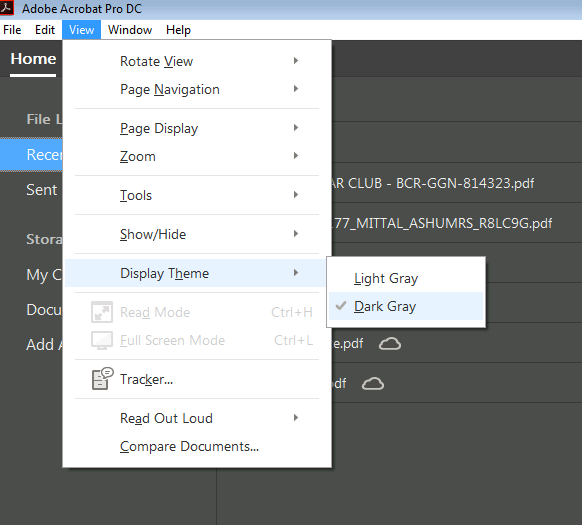Mastering Adobe Acrobat: A Visual Guide to Transform Your PDF Workflow
Navigate, create, and collaborate with Adobe's powerful PDF platform
Getting Started with Adobe Acrobat
When I first opened Adobe Acrobat, I was immediately struck by its clean, professional interface designed to help users work efficiently with PDF documents. Let me walk you through the essentials of getting started with this powerful tool.

Understanding Adobe Acrobat Versions
| Feature | Adobe Acrobat Reader (Free) | Adobe Acrobat Pro (Paid) |
|---|---|---|
| View PDFs | ✓ | ✓ |
| Add comments | ✓ | ✓ |
| Fill & sign forms | ✓ | ✓ |
| Edit PDF text & images | ✗ | ✓ |
| Create PDFs | ✗ | ✓ |
| Export to Office formats | ✗ | ✓ |
| Combine files | ✗ | ✓ |
| Redact information | ✗ | ✓ |
Installation and Setup
Installing Adobe Acrobat is straightforward, but there are a few system requirements to keep in mind. I've found that having these requirements in place before installation prevents headaches later.
flowchart TD
A[Start Installation] --> B{Choose Platform}
B -->|Windows| C[Download Windows Installer]
B -->|macOS| D[Download Mac Installer]
C --> E[Run .exe file]
D --> F[Open .dmg file]
E --> G[Follow Setup Wizard]
F --> G
G --> H[Sign in with Adobe ID]
H --> I[Installation Complete]
Multi-Platform Access
One of the features I appreciate most about Adobe Acrobat is its availability across multiple platforms. I can start working on a document at my desktop and continue seamlessly on my mobile device or through the web interface.
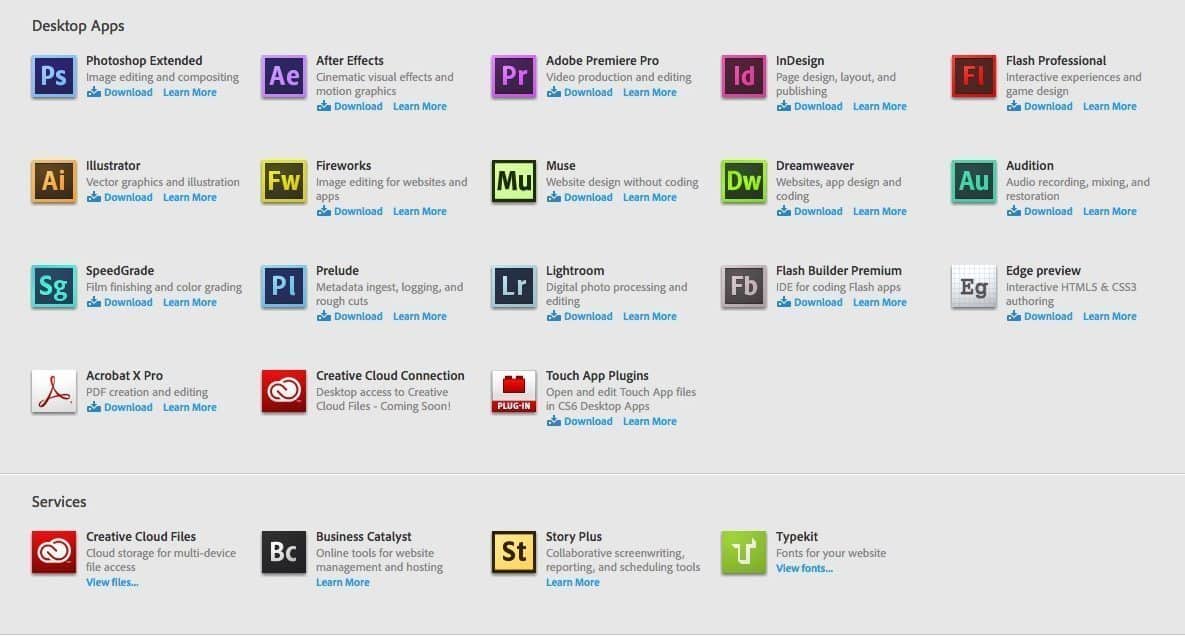
Essential Keyboard Shortcuts
Navigation
- Ctrl+F - Search for text
- Ctrl+G - Go to page
- Home/End - First/Last page
View
- Ctrl++/- - Zoom in/out
- Ctrl+0 - Fit to window
- Ctrl+1 - Actual size
File Operations
- Ctrl+O - Open file
- Ctrl+S - Save
- Ctrl+W - Close document
Editing
- Ctrl+Z - Undo
- Ctrl+Y - Redo
- Ctrl+C/V - Copy/Paste
After setting up your Adobe account and managing your subscription preferences, you're ready to start exploring the full capabilities of Adobe Acrobat. In my experience, taking time to familiarize yourself with the interface layout pays dividends in productivity later.
Creating and Converting PDFs
Creating and converting PDFs is one of the core functionalities I use daily in Adobe Acrobat. The software offers multiple approaches depending on your starting point and desired outcome.
Creating PDFs from Various Sources
flowchart LR
A[Source Files] --> B{Adobe Acrobat}
A -->|Word Documents| B
A -->|Excel Spreadsheets| B
A -->|PowerPoint| B
A -->|Images| B
A -->|Scanned Documents| B
A -->|Web Pages| B
B --> C[PDF Output]
C -->|Single PDF| D[Final Document]
C -->|PDF Portfolio| D
I find that converting files to PDF format is incredibly straightforward. You can either use the "Create PDF" option within Acrobat or, more conveniently, use the Adobe PDF printer that gets installed with Acrobat Pro.

Working with Scanned Documents
One of my favorite features is the ability to convert scanned documents into editable PDFs using OCR (Optical Character Recognition). This has saved me countless hours of manual transcription.
sequenceDiagram
participant User
participant Scanner
participant Acrobat
participant PDF
User->>Scanner: Scan physical document
Scanner->>Acrobat: Import scanned image
Acrobat->>Acrobat: Run OCR process
Note over Acrobat: Text recognition and
formatting preservation
Acrobat->>PDF: Generate editable PDF
PDF->>User: Editable document
Batch Processing
When dealing with multiple documents, I've found the batch processing feature to be invaluable. It allows me to apply the same conversion settings to multiple files simultaneously, saving significant time.
Time Savings with Batch Processing
Comparison of processing time for multiple documents
When working with large volumes of documents, I've found that AI PDF summarization tips can help quickly extract the key information from converted documents, making the review process much more efficient.
Enhancing PDF Organization
While Adobe Acrobat offers powerful conversion tools, I've discovered that PageOn.ai's AI Blocks feature takes PDF content organization to another level. When I'm dealing with complex documents containing various types of information, I use AI Blocks to segment and visually organize the content in more intuitive ways.

This approach has been particularly valuable when converting presentation materials, as it maintains the visual hierarchy and relationships between concepts that might get lost in a standard PDF conversion. For specialized needs, exploring Adobe PPT to PDF conversion techniques can help preserve your presentation's visual integrity.
Editing PDF Content
Editing PDFs used to be a major challenge, but Adobe Acrobat Pro has transformed this process. I now regularly modify text, images, and other elements directly within PDF documents.
Text Editing Capabilities

Text editing in Acrobat is surprisingly powerful. I can:
- Add new text anywhere in the document
- Delete or replace existing text
- Change font properties (size, type, color, etc.)
- Adjust paragraph alignment and spacing
- Split paragraphs or merge text blocks
While Adobe Acrobat is the industry standard for PDF editing, some users explore alternatives. I've investigated whether Notion edit PDFs capabilities could serve as an alternative, but found that for serious PDF work, dedicated tools like Acrobat provide far more functionality.
Working with Images
flowchart TD
A[Select Image Tool] --> B[Add New Image]
A --> C[Edit Existing Image]
B --> D[Choose Image File]
C --> E[Select Image in PDF]
D --> F[Place and Resize]
E --> G{Edit Options}
G --> H[Replace]
G --> I[Crop]
G --> J[Rotate]
G --> K[Adjust Properties]
F --> L[Finalize Placement]
H --> L
I --> L
J --> L
K --> L
Image manipulation in Acrobat has saved me from having to recreate entire documents. I particularly appreciate the ability to:
- Insert new images from files or clipboard
- Resize and reposition existing images
- Crop images to focus on relevant portions
- Replace images while maintaining position and size
- Adjust image properties like opacity and border style
Document Enhancement Elements
Watermarks
I often add watermarks to drafts or confidential documents. Acrobat allows for text or image watermarks with customizable opacity, position, and rotation.
Backgrounds
Custom backgrounds can enhance document appearance. I use subtle patterns or brand colors to give documents a professional look without distracting from content.
Headers & Footers
Adding page numbers, dates, or document titles as headers or footers improves navigation and provides context. I can customize font, position, and even add dynamic fields.
Page Organization
The ability to rearrange, rotate, delete, or extract pages makes document management flexible. I often combine pages from multiple sources into a single cohesive document.
Redacting Sensitive Information
When sharing documents containing sensitive information, I rely on Acrobat's redaction tools to permanently remove confidential content.

The redaction process is thorough and permanent:
- Mark text, images, or areas for redaction
- Review all marked content before applying
- Apply redactions to permanently remove the information
- Save as a new document to preserve the original
I've learned that simply covering text with black rectangles in other applications doesn't truly remove the information—it can still be copied or extracted. Acrobat's redaction tool properly removes the content from the document entirely.
Enhanced PDF Functionality
Adobe Acrobat transforms static documents into dynamic, interactive experiences. I've leveraged these advanced features to create more engaging and functional PDFs.
Interactive Elements
flowchart LR
A[Static PDF] --> B{Add Interactive Elements}
B --> C[Hyperlinks]
B --> D[Buttons]
B --> E[Form Fields]
B --> F[Media]
C --> G[Internal Links]
C --> H[Web Links]
C --> I[Email Links]
D --> J[Submit Forms]
D --> K[Reset Forms]
D --> L[Run JavaScript]
E --> M[Text Fields]
E --> N[Checkboxes]
E --> O[Dropdowns]
F --> P[Video]
F --> Q[Audio]
G & H & I & J & K & L & M & N & O & P & Q --> R[Interactive PDF]
Adding interactive elements has transformed how I create and share documents:
- Hyperlinks: I connect related content within documents and link to external resources.
- Buttons: Custom actions like form submission, page navigation, or opening files.
- Media: Embedding videos or audio enhances presentations and training materials.
Fillable PDF Forms
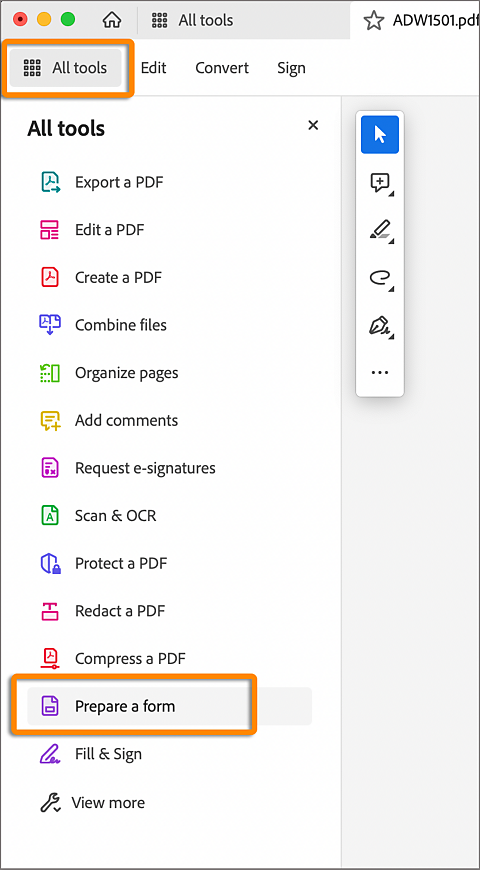
Creating fillable forms has streamlined my data collection processes. Acrobat offers various field types:
Text Fields
For names, addresses, and other text input. Can be formatted for specific data types like dates or numbers.
Checkboxes & Radio Buttons
Perfect for multiple-choice questions or yes/no selections. Radio buttons enforce single selection from a group.
Dropdown Lists
Provide a controlled list of options while saving space. Can include default selections and custom values.
Document Security
Protecting sensitive documents is crucial in my workflow. Acrobat provides multiple security options:
PDF Security Options Comparison
Security level vs. Usability trade-offs
Digital Signatures
Digital signatures have revolutionized my document workflow, eliminating the need for printing, signing, and scanning. Acrobat offers several signature options:
- Self-Sign: Quickly add your signature to a document.
- Certificate-Based Signatures: Provide verification of signer identity and document integrity.
- Adobe Sign Integration: For managing signature workflows across multiple signers.
Document Optimization
Large PDFs can be problematic for sharing and storage. I regularly use these optimization techniques:
Reduce File Size
The "Reduce File Size" option applies optimal settings automatically. For a 10MB presentation, I've seen reductions to 2-3MB with minimal quality loss.
PDF Optimizer
For fine-grained control, I use the PDF Optimizer to selectively compress images, remove embedded fonts, or discard hidden content.
When working with presentation materials, I often need to convert between formats. Understanding adobe pdf to ppt conversion tools has been essential for maintaining formatting and visual elements when repurposing content.
For complex documents with diverse content types, I've found PageOn.ai's Deep Search functionality invaluable. It helps me find and integrate relevant visual assets that might be buried deep within large PDF collections, saving hours of manual searching.
Collaboration and Sharing
Adobe Acrobat transforms PDFs from static documents into collaborative workspaces. I've found these tools invaluable for team projects and client feedback.
Review Process Management
sequenceDiagram
participant Initiator
participant Acrobat
participant Cloud
participant Reviewers
Initiator->>Acrobat: Prepare document for review
Acrobat->>Initiator: Configure review settings
Initiator->>Cloud: Upload document
Cloud->>Reviewers: Send review invitations
Note over Reviewers: Access document online
Reviewers->>Cloud: Add comments & markup
Cloud->>Initiator: Real-time comment notifications
Initiator->>Cloud: View & respond to feedback
Cloud->>Reviewers: Update notification
Initiator->>Acrobat: Incorporate feedback
Acrobat->>Initiator: Finalize document
Setting up a shared review has streamlined my feedback collection process:
- Prepare the document and initiate the review process
- Choose hosting location (Adobe Document Cloud, SharePoint, network folder)
- Invite reviewers via email with custom instructions
- Track participation and manage deadlines
- Consolidate and respond to comments
Commenting and Markup Tools

The rich set of annotation tools has transformed how I provide and receive feedback:
Text Markup
- • Highlighting
- • Strikethrough
- • Underline
- • Text replacement
Notes & Comments
- • Sticky notes
- • Text boxes
- • Callouts
- • Voice comments
Drawing Markup
- • Shapes & arrows
- • Free-form drawing
- • Measurement tools
- • Stamps
Using Stamps for Visual Feedback
I frequently use stamps to provide quick visual feedback on documents. Acrobat includes standard stamps like "Approved," "Rejected," and "Draft," but I've also created custom stamps for our team's specific review process.
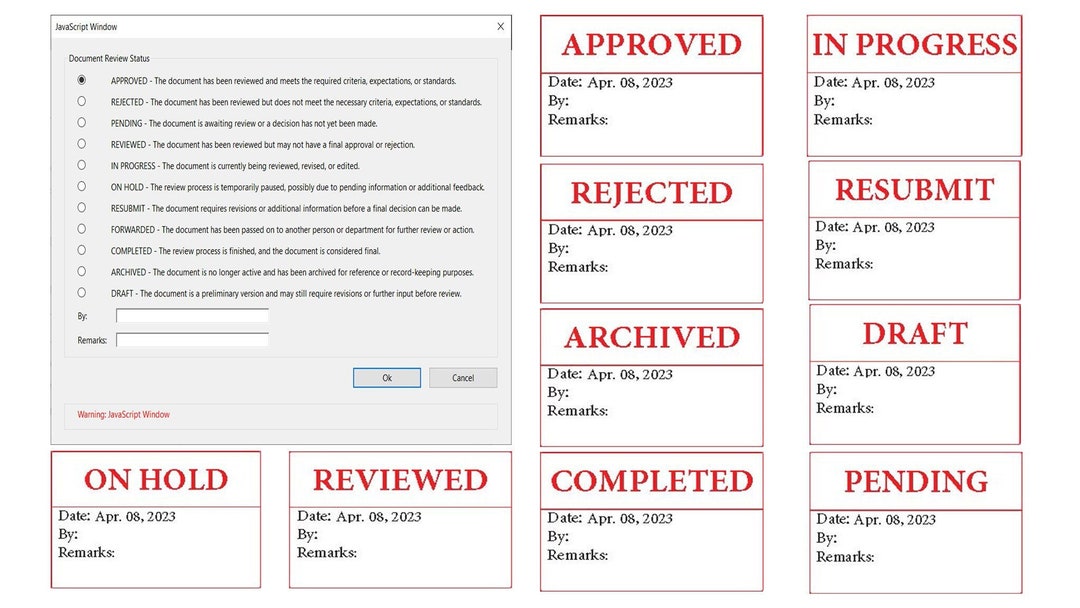
Approval Workflows
For documents requiring formal sign-off, I set up approval workflows to track the process from start to finish:
Document Approval Process Timeline
Enhanced Collaboration with PageOn.ai
While Adobe Acrobat offers robust collaboration tools, I've enhanced my team's feedback process by integrating PageOn.ai's conversation-based approach. This has transformed how we discuss document revisions by:
- Organizing feedback in threaded conversations rather than isolated comments
- Providing contextual references that link discussions to specific document elements
- Creating visual summaries of feedback themes and priority areas
- Tracking resolution status more effectively than traditional comment management
This integration has significantly reduced misunderstandings and streamlined our revision cycles, particularly for complex documents with multiple stakeholders.
Advanced Features and Workflows
As I've grown more comfortable with Adobe Acrobat, I've discovered advanced features that have transformed my document workflows and productivity.
Automating Tasks with Action Wizard
The Action Wizard has been a game-changer for handling repetitive tasks. I've created custom actions for common workflows:
flowchart TD
A[Define Action] --> B[Select Tasks]
B --> C{Task Types}
C --> D[File Operations]
C --> E[Document Processing]
C --> F[Security Settings]
D --> G[Save/Export]
D --> H[Print]
E --> I[OCR Recognition]
E --> J[Optimize PDF]
E --> K[Add Headers/Footers]
F --> L[Apply Protection]
F --> M[Add Digital Signature]
G & H & I & J & K & L & M --> N[Set Task Options]
N --> O[Save Action]
O --> P[Run on Documents]
Some of my most useful custom actions include:
- Document Preparation: OCR scan, add headers with page numbers, optimize file size, and save as PDF/A for archiving.
- Client Review Setup: Add watermark, enable commenting, set security permissions, and share via Document Cloud.
- Web Optimization: Reduce file size, create bookmarks from headings, add metadata, and optimize for fast web view.
Working with PDF Portfolios
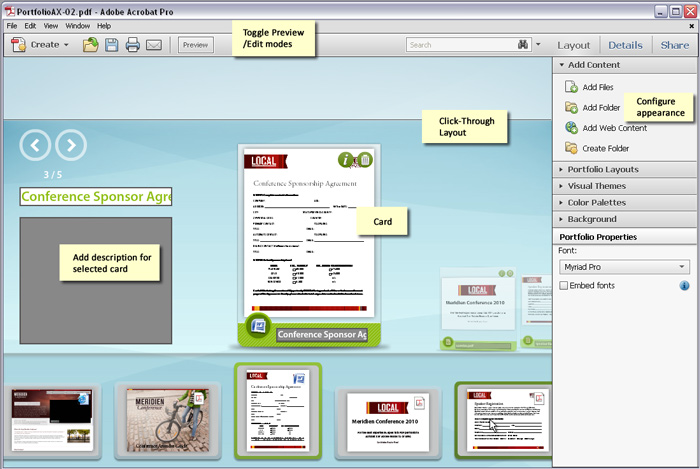
PDF Portfolios have revolutionized how I package related documents. Unlike simply combining PDFs, portfolios maintain individual files while providing:
- Custom navigation and visual layouts
- File previews without opening each document
- Custom welcome pages and descriptions
- Sorting and filtering capabilities
- Consistent branding across document collections
Data Extraction Capabilities
Extracting structured data from PDFs has saved me countless hours of manual data entry. Acrobat provides several methods:
Form Field Data
For fillable forms, I can export all form data to spreadsheet formats for analysis. This is perfect for surveys or application forms.
Table Data
Acrobat can recognize and extract tabular data from PDFs, even if they weren't created as forms. The data can be exported to Excel for further processing.
Creating Accessible PDFs
Accessibility has become increasingly important in my document creation process. I use these features to ensure my PDFs are accessible to users with disabilities:
PDF Accessibility Components
The Accessibility Checker tool has been invaluable for identifying and fixing issues before publishing documents. It provides a comprehensive report with clear remediation steps.
JavaScript Integration
For highly specialized documents, I've used JavaScript to add custom functionality:
- Dynamic calculations in forms
- Conditional field visibility
- Custom validation rules
- Interactive data visualization
Creative Cloud Integration
The seamless integration between Acrobat and other Adobe Creative Cloud applications has streamlined my content creation workflow:
flowchart LR
A[InDesign] -->|Export to PDF| B[Acrobat]
C[Photoshop] -->|Image Assets| B
D[Illustrator] -->|Vector Graphics| B
E[XD] -->|UI Designs| B
F[Premiere/After Effects] -->|Media| B
B -->|Edit in Source| A & C & D & E & F
B -->|Final PDF| G[Distribution]
Enhanced Document Intelligence with PageOn.ai
While Adobe Acrobat provides powerful document tools, I've discovered that combining it with PageOn.ai's agentic capabilities takes document intelligence to a new level. This integration has allowed me to:
- Automatically identify and categorize document components by content type
- Generate visual summaries of complex multi-page documents
- Create interactive knowledge maps linking related concepts across document collections
- Develop intelligent search capabilities that understand context, not just keywords
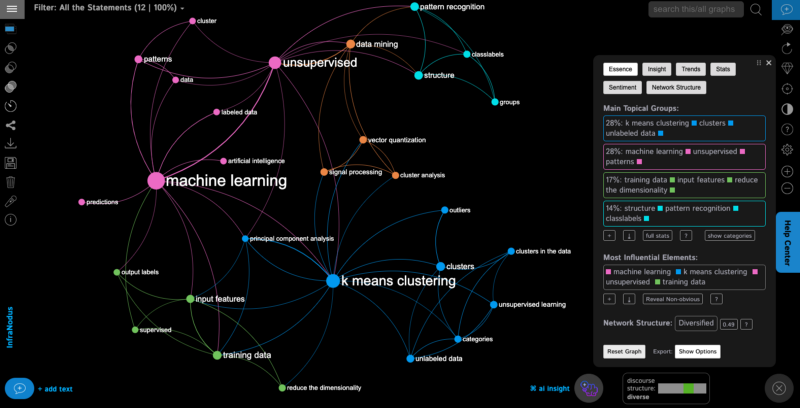
This powerful combination has transformed how I work with document collections, making it possible to extract insights and create connections that would be impractical to discover manually.
Troubleshooting and Resources
Even with Adobe Acrobat's reliability, I occasionally encounter issues. Here's how I troubleshoot common problems and where I find help resources.
Common Issues and Solutions
| Issue | Common Causes | Solution |
|---|---|---|
| PDF won't open | Corrupted file, incompatible version | Use "Repair" feature or open in Safe Mode |
| Printing problems | Complex graphics, printer driver issues | Print as image, update printer driver |
| Text not editable | Scanned document without OCR, secured PDF | Run OCR, request unlocked version |
| Form fields not working | JavaScript disabled, incompatible reader | Enable JavaScript, use compatible reader |
| License errors | Subscription expired, activation issues | Check subscription status, sign out/in |
Resolving PDF Printing Issues
Printing problems are among the most common issues I've faced. This troubleshooting flowchart has helped me resolve most printing challenges:
flowchart TD
A[PDF Printing Problem] --> B{Error Message?}
B -->|Yes| C[Note Error Code]
B -->|No| D{Prints Partially?}
C --> E[Search Adobe Support]
D -->|Yes| F{Graphics Issues?}
D -->|No| G{All PDFs or Just One?}
F -->|Yes| H[Print as Image]
F -->|No| I[Check Paper Size]
G -->|All PDFs| J[Update Acrobat]
G -->|One PDF| K[Try PDF Repair]
H & I & J & K --> L{Problem Solved?}
L -->|No| M[Contact Support]
L -->|Yes| N[Document Solution]
Finding Help Resources
Adobe Support
The official Adobe Help Center provides comprehensive documentation, tutorials, and troubleshooting guides. I start here for most issues.
Community Forums
The Adobe Community Forums connect users with experts and peers. I've found solutions to unusual problems by searching past discussions.
Video Tutorials
Adobe's YouTube channel and third-party tutorial sites offer visual guidance for complex tasks. I prefer these for learning new features.
Staying Updated
Adobe regularly adds new features and fixes issues. I stay current with:
- Automatic updates through Creative Cloud desktop app
- Adobe's blog for feature announcements
- Industry newsletters covering PDF technologies
Adobe Acrobat Version Adoption
User distribution across different versions
Staying on the latest version has helped me avoid compatibility issues and take advantage of new productivity features as they're released.
Transform Your Visual Expressions with PageOn.ai
Take your PDF workflow to the next level by combining Adobe Acrobat's powerful editing tools with PageOn.ai's innovative visualization capabilities.
Start Creating with PageOn.ai TodayConclusion
Throughout this guide, I've shared my journey of mastering Adobe Acrobat and transforming my PDF workflow. From basic navigation to advanced automation, Acrobat offers an impressive range of tools for document creation, editing, and collaboration.
What I've discovered is that while Adobe Acrobat provides excellent foundation for PDF work, integrating it with specialized visualization tools like PageOn.ai creates a truly transformative document experience. The combination allows for more intuitive organization of information, enhanced visual communication, and deeper document intelligence.
Whether you're a casual user or a document professional, I encourage you to explore beyond the basics and discover the full potential of these powerful tools. The time invested in mastering these capabilities will pay dividends in productivity and effectiveness in your personal and professional document workflows.
You Might Also Like
Harmonizing Digital Innovation with Wilderness Wisdom: When Technology Meets Ancient Calls
Discover how visual storytelling bridges technology and wilderness wisdom, creating powerful tools for nature enthusiasts to document, preserve, and share ancient outdoor knowledge and skills.
The Psychology Behind Artificial Scarcity: Designer Toys and Consumer Behavior
Explore the economics of artificial scarcity in designer toy markets, from psychological drivers and market dynamics to ethical considerations and future trends in collectible industries.
Labubu's Global Journey: From Chinese Designer Toy to Worldwide Visual Phenomenon
Explore how Labubu, the quirky Chinese designer toy, captivated global markets through strategic visual storytelling and created an international cultural phenomenon.
Pop Mart's Global Expansion: Crafting a Collectible Empire Through Strategic Visualization
Explore Pop Mart's international toy market strategy, from IP-driven business models to visual storytelling. Learn how this collectible empire achieved 375% overseas revenue growth across 100 countries.


